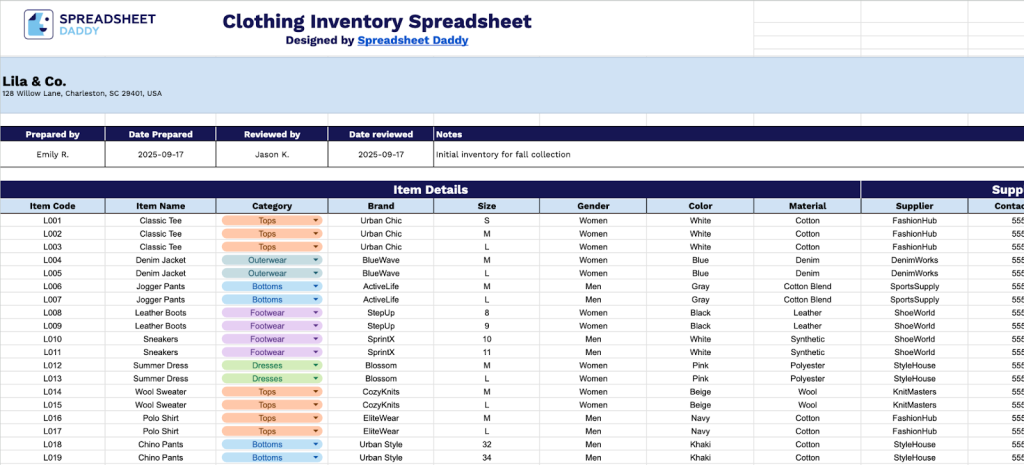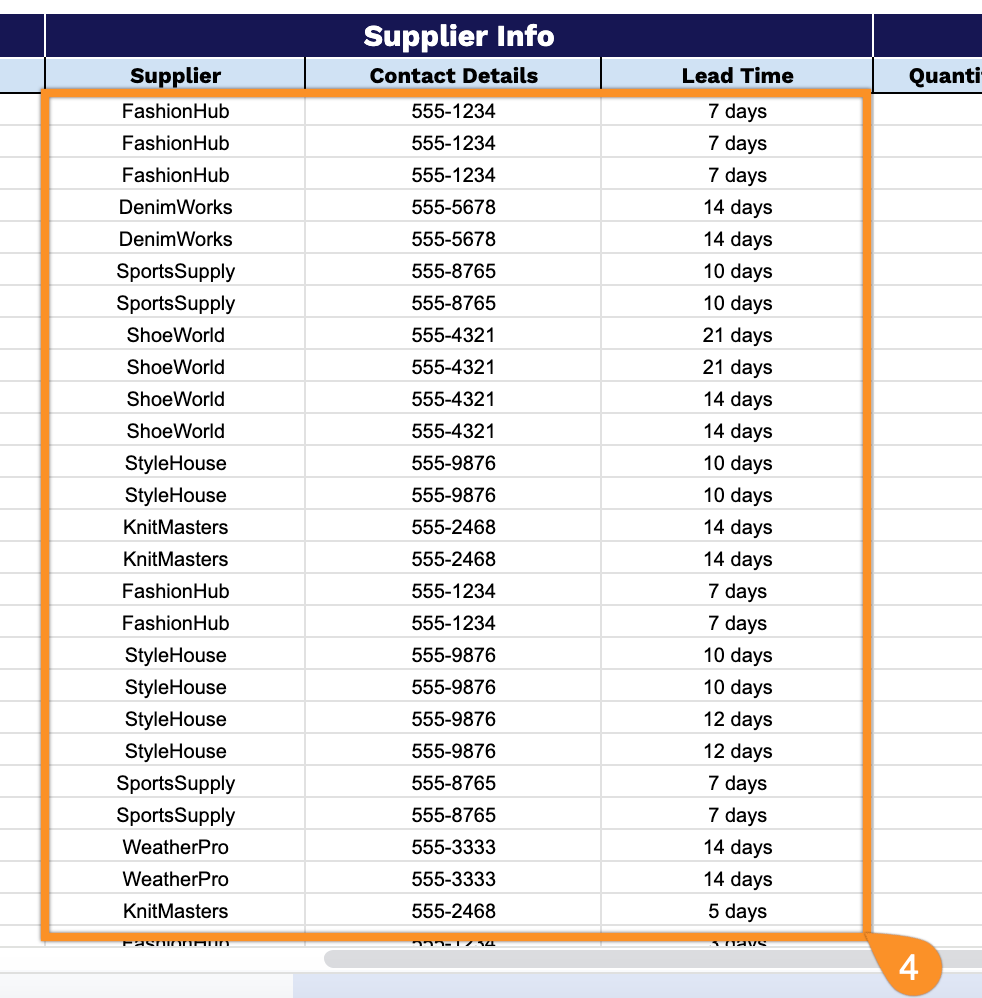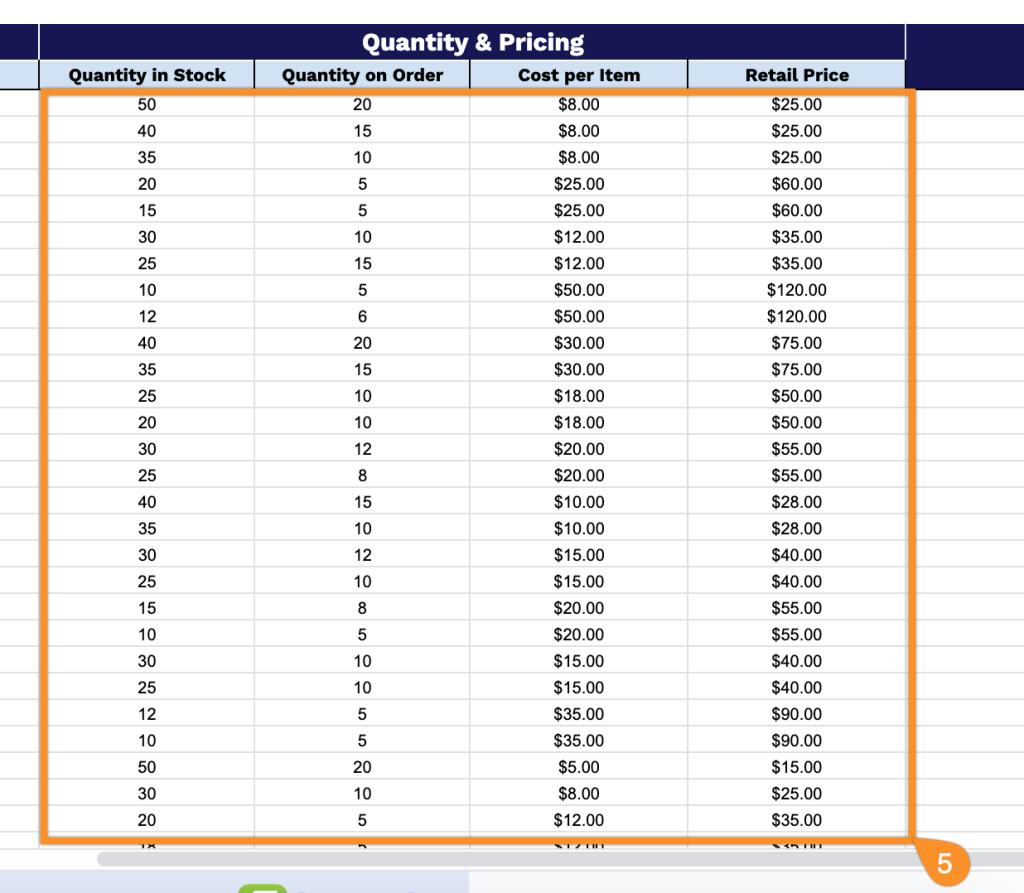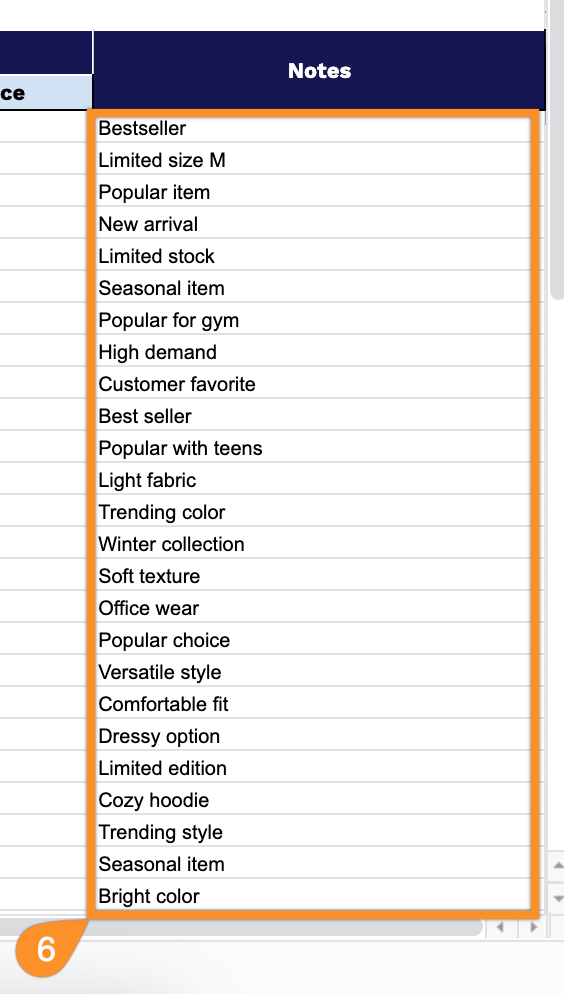Keeping track of your clothing inventory doesn’t have to be complicated. Whether you’re running a small boutique or organizing your personal wardrobe, having a clear system for tracking what you own can save time and prevent costly mistakes.
Our free clothing inventory template provides a straightforward solution. It includes all the essential columns you need to track sizes, colors, costs, and stock levels in one organized spreadsheet. The template works with Google Sheets and Excel and can be printed as a PDF for maximum flexibility.
Download the template today and start managing your clothing inventory more effectively.
Quick Jump
ToggleWhat Is a Clothing Inventory Spreadsheet?

A Clothing Inventory Spreadsheet Template is a pre-formatted digital document that helps track and organize clothing items. It includes columns for essential details such as item descriptions, sizes, colors, quantities, costs, and storage locations.
This tool is helpful for individuals organizing their wardrobes or businesses managing retail inventory. The template provides a standardized format for recording, updating, and analyzing clothing stock, making inventory management more efficient and systematic.
Why Use Our Clothing Inventory Spreadsheet Template?
- Instant implementation with zero barriers: Get up and running immediately without any fees, account creation, or complicated installations. Download and start managing your clothing inventory within minutes.
- Comprehensive tracking: Monitor item codes, categories, brands, sizes, colors, suppliers, quantities, and pricing all in one organized spreadsheet. This eliminates the need for multiple tracking methods or scattered documents across different systems.
- Streamlined supplier management: Maintain all supplier contact details and lead times in a single, central location, enabling faster reordering decisions and stronger vendor relationships without the need to search through separate contact lists or purchase histories.
- Enhanced profitability control: Track both cost per item and retail prices simultaneously, allowing you to quickly identify your most profitable products and make informed pricing adjustments that maximize your margins.
Download Spreadsheet Daddy’s Free Clothing Inventory Management Spreadsheet

This clothing inventory spreadsheet template is designed to help fashion retailers and clothing businesses efficiently track and manage their stock.
It provides a professional, organized system for maintaining accurate inventory records and making informed purchasing and pricing decisions.
What’s included
- Comprehensive item tracking system: The template includes columns for item codes, names, categories, brands, sizes, gender, colors, and materials, giving you complete product details for every clothing item in your inventory.
- Supplier management tools: Dedicated fields for supplier contact information and lead times help you maintain vendor relationships and plan restocking schedules effectively when inventory runs low.
- Inventory and pricing controls: Track current stock quantities, items on order, cost per item, and retail prices to maintain clear visibility of inventory levels and profit margins across your entire clothing line.
- Professional documentation structure: The template features a header section for business information, preparation details including who created and reviewed the document, dates, and a notes area for additional observations or special instructions.
How to Use Our Clothing Inventory Spreadsheet Template
1. Download the clothing inventory template or create a copy of the Google Sheets document provided above.
2. Enter your store’s name, address, and inventory coordinator details with completion date. Add the supervisor’s name and review date. Use the notes section to record key observations like missing sizes, discontinued styles, return issues, or inventory discrepancies.

3. Complete the Item Details section by entering all essential product information:
- Item Code: Enter the unique identifier or SKU assigned to each clothing item for inventory tracking.
- Item Name: Specify the complete product name and style description of the garment.
- Category: Select the appropriate clothing classification (tops, bottoms, outerwear, accessories, etc.).
- Brand: Include the manufacturer or designer label associated with the item.
- Size: Record the sizing information (XS-XXL, numeric sizes, or specific measurements).
- Gender: Specify the target demographic (men’s, women’s, unisex, or children’s).
- Color: Document the primary color or color combination of the garment.
- Material: List the fabric composition and care instructions for the item.

4. Document supplier relationships in the Supplier Info section for vendor management:
- Supplier: Enter the name of the vendor or manufacturer providing the clothing items.
- Contact Details: Include phone numbers, email addresses, and key contact persons for ordering.
- Lead Time: Record the expected delivery timeframe from order placement to receipt.

5. Track financial and stock data in the Quantity & Pricing section for business analysis:
- Quantity in Stock: Document the current number of units available for immediate sale.
- Quantity on Order: Record items that have been ordered but not yet received from suppliers.
- Cost per Item: Enter the wholesale price paid to acquire each unit for profit margin calculations.
- Retail Price: Set the selling price charged to customers for revenue tracking purposes.

6. Document key observations and additional context in the Notes field to improve your inventory assessment and procurement decisions.
